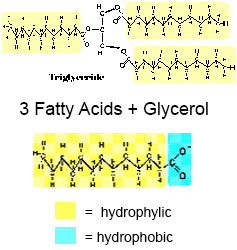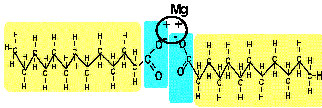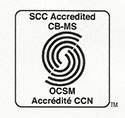Latent Turbidity
The Elimination of False Clinical Interpretation Due to Latent Turbidity Interference
-
-
- Glucose - Hexokinase versus Synermed® Infrared
- Inorganic Phosphorus
- Creatinine
- Serum Iron
- Bilirubin
- Total Protein
-
What is Latent Turbidity?
Latent turbidity is turbidity which forms when serum is placed in reagent. Latent turbidity is particularly troublesome because the serum sample may be clear. Because testing is performed with automation, the analyst cannot observe the formation of turbidity from a particular sample and false results are generated. Quality control programs are no protection against this form of interference because quality control sera do not contain the serum substances which produce the interference.
What Causes Latent Turbidity Interference?
The principal offenders in serum are Free Fatty Acids, abnormal proteins, Intravenous Dextran “plasma expanders” and phospholipids. These substances are present in relatively high concentrations in certain disease states and with certain therapeutic regimens.
All of these substances are highly soluble in serum; but, they precipitate in certain reagents. The effect in non-Synermed methods in most cases is severe positive interference. However, if the non-Synermed method employs a dynamic serum blank and the turbidity forms in the blank step, the interference may be severely negative.
Additionally, the turbidity may form slowly and thus interfere despite the use of dynamic serum blanks or kinetic assays.
What Clinical States Produce Latent Interferences?

The most common of these interferences is due to high concentrations of Free Fatty Acids (FFA). In diabetes, keto-acidotic patients form very high levels of FFA as the patient’s body undertakes gluconeogenesis. Fatty acids are produced from the metabolism of fats. The Free Fatty Acids are ultimately catabolized to form ‘ketone bodies’.
Disease states exhibiting high levels of phospholipids are similarly affected.
Multiple Myeloma and other conditions having high abnormal proteins frequently produce turbidity in reagents even though the serum is clear. This is generally due pH changes which precipitate the abnormal proteins.
Starvation and parenteral feeding with lipid emulsions such as Intralipid® or Lyposyn II® produce gluconeogenesis producing very high levels of FFA.
What is the mechanism of Turbidity Formation?
Triglycerides are insoluble in serum because they have no charge and are principally hydrophobic. Free Fatty Acids are soluble in serum because the carboxylic acid group is negatively charged at serum pH values and the hydrophilic carboxyl group carries the hydrophobic hydrocarbon moiety into solution.
However, in strongly acid solution, the carboxyl group is protonated and has no charge and is therefore insoluble.
Free Fatty Acids were the first soaps. Detergents have a hydrophobic group and a charge. Soap was made by treating animal fats with lye to produce FFA and glycerol. But, such soap precipitates to form “soap scum” in hard water. Likewise, FFA in serum precipitates in the presence of Magnesium in reagents: The negative charges on the FFA form salt links with the positive charges on magnesium and cause the two FFA’s to combine. The resulting Magnesium FFA is insoluble and forms turbidity in the reagent.

Likewise, phospholipids form magnesium salts rendering them insoluble.
Glucose Testing
Hexokinase glucose reagents, which contain high levels of magnesium, have been reported to produce spurious results on patients in ketosis. [See; Karmen, Albert Einstein Medical Center, New York, attached]. Thus, when accurate glucose results are most vital, they are false. Synermed’s infrared glucose method showed no interference in these patients.
Comparative studies of patients on parenteral feeding with Intralipid® showed spuriously high values in a study in Scotland’s Edinburgh University using the lab’s method but such interferences were absent with the Synermed® infrared method.
Horses who are “off their food bag” develop high levels of FFA as they begin gluconeogenesis. Thus, even though their glucose values are dangerously low, normal or even above normal values may be reported with hexokinase methods.
Creatinine Testing
Latent turbidity partially explains spurious false high results in creatinine testing. The Synermed® creatinine method shows no such effects and correlates directly with expensive enzymatic creatinine methods.
Inorganic Phosphorus Testing
Abnormal proteins precipitate in phosphorus reagents due to the low pH of the reagents. This causes spuriously high values and may cause cuvette coating affecting subsequent assays on automated systems.
Ketoacidotic, patients, patients undergoing parenteral feeding with lipid emulsions, and starving patients have high levels of free fatty Acids which produce spurious results in traditional phosphorus assays.
The Synermed® infrared phosphorus method is unaffected by these substances.
Serum Iron Testing
Serum Iron Reagents are sufficiently acid to precipitate a variety of latent turbidity producing compounds in serum and this invalidates results.
The Synermed® infrared method shows little effect of such turbidity and the reagent matrix used is such as to prevent most latent turbidity from forming.
The Synermed® infrared method is the only serum iron method which can be performed on heparinized plasma and many dialysis clinics are only able to use the Synermed® method on post dialysis samples.
Total Protein
Total-protein reagents contain copper which precipitates Free Fatty acids.
Additionally, the Dextran plasma expanders used to treat shock precipitate in many total protein reagents.
The Synermed® total protein reagents are unaffected by these substances.
Direct Bilirubin
Direct bilirubin reagents are sufficiently acid to precipitate free fatty acids and abnormal proteins. The Synermed® infrared reagent shows no such effect.
Connect with us
Certifications
 |
 |
 |
 |
||

